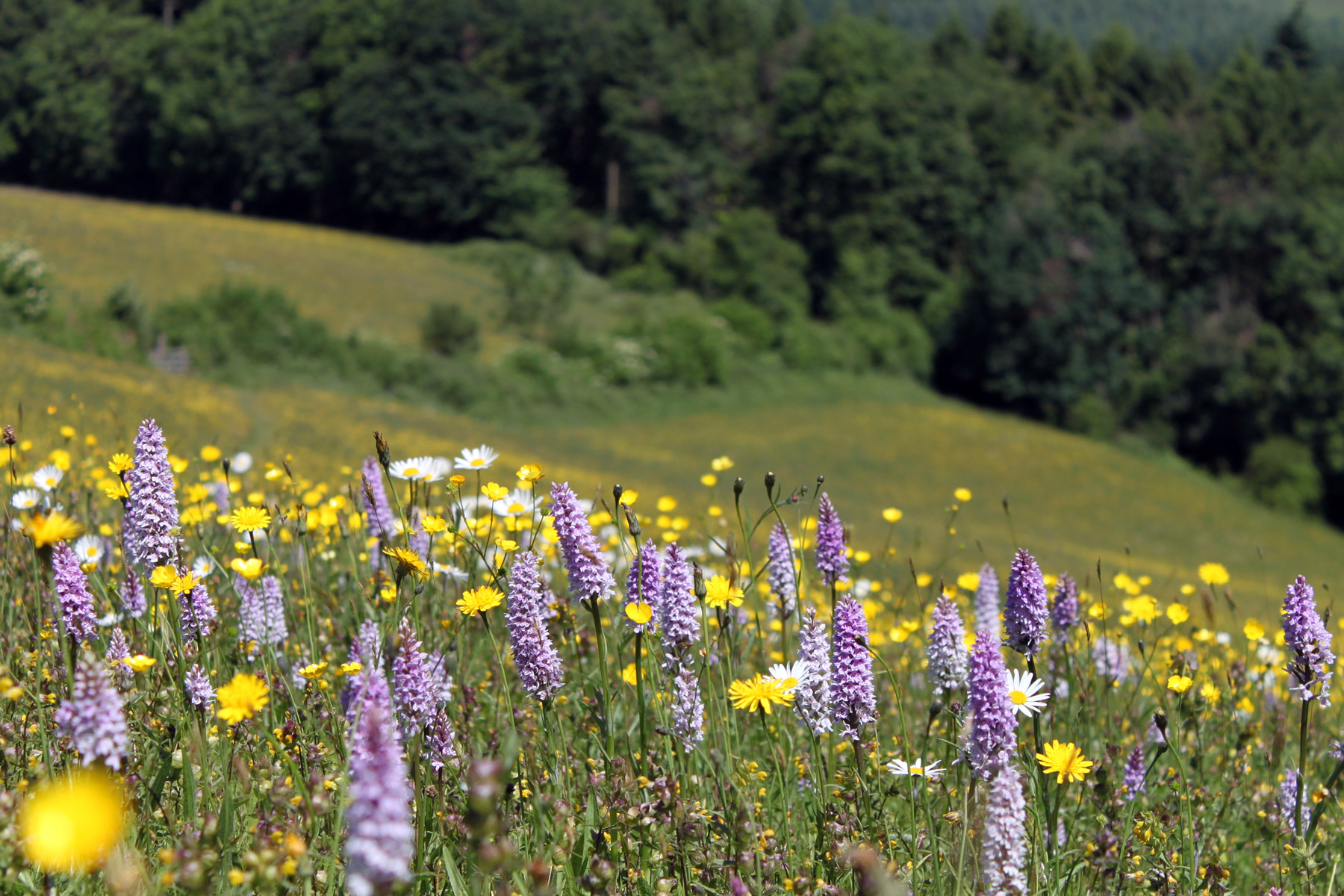A very big thank you to James Hawkins who hosted a walk on winter meadow management at Warren Farms on 13 December 2021.
James showed us 3 meadows that he’s restored at Hill House using very different methods.
In 2021 as part of the Meadow Makers project a field has been enhanced using seed from the adjacent Bromyard Downs Common.
We discussed the pros and cons of different preparation including machinery for harrowing and creating bare ground. We saw some seedlings emerging
 The importance of keeping bare ground over winter can’t be understated and we discussed how to manage the restored meadow in its first winter and the following spring and summer so the broad leaved plants can flourish and avoid being out-competed by grasses and weeds. This can be done with carefully monitored grazing livestock that are removed before they start selecting out desirable wildflower seedlings or causing poaching. Alternatively any vegetation that is shading out the wildflower seedlings can be cut and carted away
The importance of keeping bare ground over winter can’t be understated and we discussed how to manage the restored meadow in its first winter and the following spring and summer so the broad leaved plants can flourish and avoid being out-competed by grasses and weeds. This can be done with carefully monitored grazing livestock that are removed before they start selecting out desirable wildflower seedlings or causing poaching. Alternatively any vegetation that is shading out the wildflower seedlings can be cut and carted away
Here’s where to go If you want help with seedling ID :-
Wildflower seedling ID – Herefordshire Meadows seedling ID chart 2020 – photos taken in the field
Photos of cultivated wildflower seedlings (cultivated garden plant seedlings too) available at the seed site
Another challenge that came up in discussion is the need for suitable seed cleaning equipment for brush harvested seed to be spread evenly any other way than by hand from a bucket. Having such large variation in seed size makes this difficult and expensive for the volumes of wildflower seed that we are harvesting. For the time being we will stick to one sieving of brush harvested material through chicken wire hammock – but any details of affordable system that we can use if future are most welcome.
James’ 2019 restoration at Broomyfields is already showing increasing flower richness. James explained how worthwhile he’s found it to use the Rapid monitoring field sheet. It’s reassuring to record many species from the seed mix introduced in 2019 are now growing in 2021. In 2020 we weren’t quite sure if the method had worked but its great to see that 2 years on things are really beginning to change.
Go to our survey and monitoring page to find blank forms and Stuart Hedley’s short video of how to do the rapid plant monitoring for baseline monitoring of your meadow. And then survey every 1 or 2 years after changing management or introducing seed or green hay.
The third field we walked through has been extensively managed by James over 15 years in HLS and is gradually getting more species rich and providing good grazing too. This natural method is ideally suited to those with lots of patience and confidence in the wildflower seedbank. It’s not for everyone but it can be a very cost effective method. As can bale grazing with flower rich hay; rotating livestock over winter for short periods on small areas and moving them on once the hay is eaten and the seed trampled into the sward (photo from James Hughes 2019)




